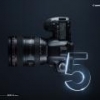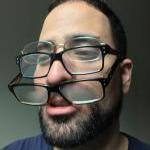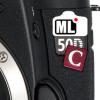Leaderboard
Popular Content
Showing content with the highest reputation on 02/18/2014 in all areas
-
Beautiful 4K Blackmagic Production Camera footage from James Miller
UltimateMale and 2 others reacted to thedest for a topic
Your point is correct. But the users are also correct. They are not talking about the amount of detail, they are talking about the PERCEIVED detail. To get a nice looking image you have to know how to ballance the amount of detail captured and the amount of local contrast (sharpening). Most people still use 1080p displays. In my 4k display, I can clearly see the difference in the amount of detail between the 4k prores and a 1080p video, but once you watch both videos on a 1080p display, the difference is not that big. Why? Because if you have a lot of detail and you dont add LOCAL CONTRAST (some people call it sharpening), your detail wont be noticeable. So its totally fair to say that, on a 1080p display, a 1080p raw video from a 5D can "LOOK" more "detailed" than that 4k ProRes video. In reality it wont have more detail, but this detail will be hidden by the lack of local contrast. I dont like oversharpening, but that video is too soft. I know that its a UHD video, but the average person watching that video wont be impressed. And we make videos for the average person.3 points -
Panasonic G6 for corporate video: first impressions
nvldk and one other reacted to tlovegrove for a topic
With advice from some of you, I picked up a G6 recently for corporate video work (actually replaced my Canon 6D with the G6 to save money). I thought I was getting a GH3, but due to an inventory error by keh I ended up with no GH3, so I picked up a G6 off Craigslist. This is my first experience with Micro Four Thirds. FWIW, first impressions from my first weekend of shooting: Ah, the joy of a camera from a manufacturer who cares about video!! Now that I've seen how video-friendly Panasonic can make these things, I'm even more dumfounded that other manufacturers don't do the same thing (Dear Nikon, I would have bought a D5300 and been all-in with Nikon if you didn't have that ridiculously short video time limit). In less than 5 minutes I understood the menu system and had all of my key video settings ready to go. Very intuitive. Love all of the custom fn keys. Delighted by the battery life, no overheating issues, and no video time limits. First thing I did was set it up and just let it run - an hour and a half later, it was still recording just fine, and still had 2/3 battery life. My first touch screen, and I like it. The very light plastic is a shock coming from DSLR bodies, but overall I like it. That LCD hinge just scares me a little bit. It seems flimsy. Glad to have the electronic viewfinder for shooting video outdoors. The "record" button frustrates me some - it's indented so much into the camera body. If you're not looking at the LCD, it's not clear when you've depressed it and when you haven't. I love the little lenses. I got rid of my 6D partly because I just didn't carry it around because of size, and so many of the lenses were truly massive. I'm really excited about the deeper depth of field. I got the 6D partly because I wanted the super-shallow DOF. But for the kind of corporate stuff I do most of the time, I had to stop down to at least 4.5 just to get the nose in focus! So it's actually really cool to be able to shoot in the 1.4-3.5 range. Of course that also helps to offset the higher ISO noise issues. Video autofocus is surprisingly usable. I manual focus most of the time, but am pleasantly surprised to see that this will do the job if I really need it. The 2x crop factor is going to take some adjusting. I love using older manual focus lenses for video, and of course anything wider than 24mm costs a fortune. So I'll have to use MFT lenses to go wide. But gratefully I've discovered that one of the key focal lengths I need is the FF 100mm equivalent - which means the whole world of affordable 50mm lenses are available as options! Colors are really going to require some adjustment. Coming from Canon, I'm so used to pulling back the deep reds and rich colors. With the standard output from the Panasonic sensor, I can get a very natural look for skin tones if I do quite a bit of color correction. But overall I'm just surprised at how flat the image is, even when I crank up contrast and color. It seems to be really tailored toward film-look customizations in post processing. Again I'm not really concerned by this - I'll learn the PP that works best to get what I need. But it's a big shift from what I'm used to. Grateful for your advice that pointed me toward the G6, Tim2 points -
Canon EOS 50D with Squarefront and Roundfront Anamorphic lenses
Tito Ferradans and one other reacted to au8ust for a topic
Just want to share this moment :D I used to ask this about a year ago whether it's possible to use a Lomo Roundfront Anamorphic lens in PL mount with a Canon camera with a PL adapter. Most people said that can't be done due to the mirror, the mount size, etc... So I've decided to order a PL mount adapter to give a try and... it works! Even with the squarefront one but just the 80mm. There is no need to remove the mirror for most roundfront lens like 75mm, 100mm and 150mm and even the Squarefront 80mm because they have short rear part. But for the 50mm it has a bit longer rear mount so you need to tape the mirror. Sample stills from the Roundfront 75mm can be found here. Too bad, I don't work full time for filmmaking now. Otherwise, this would be even more exciting for me :(2 points -

Beautiful 4K Blackmagic Production Camera footage from James Miller
Juxx989 and one other reacted to fuzzynormal for a topic
I'm thinking a lot of y'all need to take a break and go into the screening room here on EOSHD. Look at stuff that actually exists as a creative endeavor, for better or worse. Get motivated to create rather than pixel peep. Even if you have the latest and greatest camera, all that resolution is for naught if you're horrible at framing a composition and editing. And try not to get all sad and mopey if someone doesn't like a piece of kit that you like/covet. It happens, so what? Does your self-worth run tandem to the gear you own? Really? Someone owns a BM cam and you want a Pan4K. Fine. I'm not sure we need to hear convoluted rationalizations about your future purchase here online. Do we? (I'm attempting to motivate myself with this plea as well...too much dry corporate editing and procrastination forum reading. Making a dry training video turns me grumpy. Not enough creativity going on in my life this week.)2 points -
Slow motion test shot with D5300 this weekend.2 points
-

Beautiful 4K Blackmagic Production Camera footage from James Miller
Cole Alcock and one other reacted to mtheory for a topic
Let's not forget that James is a master grader who made 5D H264 footage look incredibly film-like long before RAW showed up, so I suspect the softness and the muted colors in this latest video are very much intentional, and result of his grade. I remember seeing him being dissed around on various forums for his 'aggressive' visual style, so perhaps he decided to scale back in response? I hope it is only temporary, as I very much love his visual approach, which he perfected with Genesis. As for BM4K, I am still on the original NAB-date pre-order but will reserve my judgement until RAW update comes out.2 points -

Discovery: 4K 8bit 4:2:0 on the Panasonic GH4 converts to 1080p 10bit 4:4:4
KarimNassar and one other reacted to Michael Ma for a topic
I think that Cineform Studio free version (now called GoPro Studio 2.0) can do this. In step 1, convert your file to CFHD (in the same resolution). It is inflated to a 10-bit file. Step 2, select file. Step 3, export to custom settings, choose MOV container, scale down to 1080p, you can choose Film scan 2, which is the highest quality that can preserve the details of a 4:4:4 footage. Update: Just tried this with my Galaxy Note 3 which shoots 4K 4:2:0 8-bit at 50Mbps AVC. Looks a million times better than native 1080p. I also tried dropping the same 4K file into After Effects CC working in 16bpc. Created a sequence and exported to DNx 350X or 440X 4:4:4 10-bit...Looks different than Cineform (CFHD) workflow above. Not sure which is better to be honest.2 points -
Next to the GH4 comparison, this seems to be the other match up people are interested in. The link below has the details, and says there are more test to follow. http://***URL not allowed***/?p=235061 point
-

isco ultra star questions
iwander_lust reacted to tonydtv for a topic
Also, if you do go the isco route, check the pictures of the lens barrel! Some focus to 5 feet and some only focus to 15 feet.1 point -
It's impossible to solidly define, or else discussions would've ceased 10,000 threads ago! Personally, I think people simply mean production value when they say film look. They want their stuff to look like the quality they see on TV or in the theatre. There are so many variables that go into making that look. Camera, lighting, framing, blocking, set design, color grading, costumes... a lot of talented folks in different departments firing on all cylinders. While it's getting easier to hit the high end on some of them (camera), it's not so easy to define and reach those same levels with some of the other variables. I think people continually chase it with simple solutions like 24p, shallow DOF, and now 2.4:1 framing and weird muted surreal color grades. Things that play a part but don't address the core of why high end cinema is what it is. And I don't just mean high end in terms of budget, but artistic talent. I do find that there's this weird valley now with online short films. They used to scream amateur with all facets. Nowadays so many are looking better and better, closing the gap between high end and low end... but the story and/or acting is still bad. Especially the acting. People make fun of Michael Bay movies, but the acting in those is honestly phenomenal compared to the average film we see posted on these types of forums. It's always jarring to see such good looking stuff, and then the suspension of disbelief is instantly shattered with the first line out of someones mouth. Hard to find good or even decent actors though. It really is a hell of a talent.1 point
-
I find it funny that pixel peepers get bashed so routinely. Even high level DOPs have done extensive tests with different cameras before using them for a project. A big part of getting the most out of your gear is testing it and getting familiar with the strengths and weaknesses. You could argue that it's even more important to do this with the low end stuff since it's going to be way less forgiving than an Epic/Alexa. That said, I do think that most will see bigger jumps in the quality of their work by improving their composition/lighting/editing rather than switching camera systems.1 point
-

isco ultra star questions
iwander_lust reacted to Julian for a topic
1 - you'll only use the anamorphic part. You have it unscrew the back lens and use your own taking lens so it doesn't matter. 2 - not sure 3 - only buy an isco if you can get a cheap one. Like €150/200. They are pretty heavy and cumbersome to use, although they are pretty sharp. I'd suggest searching for a smaller Kowa. The prices can get pretty high but if you are lucky maybe you can find a good one for about €300.1 point -
With ML and card spanning turned on with a 5DIII people are getting about 110 MB/s so that is about the limit that camera can do continuously anyway. ML doesn't limit the maximum resolution in any way, those limits are a result of limits of the data stream that they hack into. In non-crop mode the maximum resolution is the max resolution of the camera / 3 5760 x 3840 / 3 = 1920 x 1280. That is because the camera takes the raw sensor data and only reads out every third pixel and then sends that to compression. ML can grab that data after it has been down sampled and dump it to the card. They have no direct access to the sensor data so they are limited by what they can access which I believe is actually a raw data stream meant for the Live View. In crop mode the data stream is much larger (3584 x 1440) and is every pixel instead of every third so that is the max resolution in that mode. Also the resolutions have limitations as well can cannot be just any random value. The width in pixels should be evenly divisible by 16 and the number if bits per horizontal line must be divisible by 16. If you do the math you will see that most of the possible resolutions are already included, I recently added one my self at 1792 wide. So shooting roughly 4/3 aspect the highest non-crop mode res you can do is 1728 x 1280. In crop mode you could do 1920 x 1440.1 point
-
That "dot" in the sun is a problem BM is too familiar with yet they manage to send out a new production ready camera again with the same problem?1 point
-
Canon EOS 50D with Squarefront and Roundfront Anamorphic lenses
Chris Elkerton reacted to au8ust for a topic
Pretty good. I have 3 PL adapters from 3 different sellers. The one ciecio7 is the best you can buy and funkykoval2001 is the the second best IMO.1 point -

Canon EOS 50D with Squarefront and Roundfront Anamorphic lenses
Tito Ferradans reacted to Chris Elkerton for a topic
Hey August, Good to know, I have an 80mm Squarefront with Olex at the minute. What brand adapter are you using?1 point -
So "Jhines" initial impression was right all along, the footage was soft for a reason.1 point
-

Beautiful 4K Blackmagic Production Camera footage from James Miller
JHines reacted to Ernesto Mantaras for a topic
Sure, let me clear this up for you. I read all you comments and, to start clearing things up, I perhaps was confused by your key words to read, which got contradicted when you mentioned that "the 5D3 at 1920 x 720 looks more appealing to me than the BMC piece at 1920 x 1080(which is being streamed as of right now).", since the streamed version was 720p at the time you commented this (and at the time I mentioned that you had watched a 720p file if you only watched the streamed version). So did you actually watch the streamed version at 720p or the original uploaded file at 1080p. To see the answer, jump over the next paragraph. But, since you were being condescendent to me, let me clear this bit up for you first: Vimeo only converts to 1080p by request of the user and only if he/she is a Plus or Pro member. Do you know what that means? It means Vimeo tries to save bandwidth (and perhaps take care of the users with lesser machines that maybe can't play 1080p right). Well, that's speculation on my part. But you don't care what Vimeo does. So let me tell you: did you know there's a little button to the left of the "full screen" button on the Vimeo player that allows you to see the real pixels (only when you're in full screen, mind you)? Thanks to that you can see whether or not the user who uploaded the video has upgraded it to 1080p or not. James hadn't at the time you started all this (and you could also tell by looking at the download options). But you can tell whether or not a video is 720p or 1080p, right? I mean, since we're coming from 4K, it should be pretty obvious. Yet, again, the BMPC video at the time of discussion was being streamed at 720p (1280x720 that is) and the 5D video was being streamed at 1080p (1920x720 is 1080p cropped, you see) and you didn't notice there was an obvious difference that could very well be due to Vimeo's de facto system? Oh, right, you don't care what Vimeo does. So why argue? No argument then. It's enough to just take a look at the pictures you uploaded in >this post, comparing the BMPC video and the 5D video, saying how bad the first one was, how soft and all... You see, that pic tells you off. It comes from a 720p video, even if the file's resolution is 1920x1080. So indeed you were comparing a 720p video next to a 1080p video (and not the 1080p originals like you're trying to make us believe you did) and saying the first one looked soft. Well, of course! Just to be clearer still, here's your grab next to the current 1080p upgraded streaming version of the BMPC video. You're welcome. Sorry for my tone, but I don't like being condescended. Your statement was confusing and I thought your opinion on the resolution of the BMPC made no sense, so it had to be that (according to the second part of the conflicting paragraph) you had watched the streamed 720p version of the video to arrive to such conclusion, and not the originally 1080p uploaded file. You confirmed my suspicion with your posted framegrab and still you you denied it and talked down on me. Why not have a little self-criticism? Now we go back to discussing dynamic range, tonality, grading and all that. Cheers!1 point -

Discovery: 4K 8bit 4:2:0 on the Panasonic GH4 converts to 1080p 10bit 4:4:4
Ernesto Mantaras reacted to jcs for a topic
Any workflow which can downsample 4K to 1080p at 10-bits or more should be able to produce 9-bit 444 RGB. It won't be full 10-bit as the chroma was only 8-bit, however the luma mixed in with chroma when converting to RGB will be 10-bit, so really more like 9-bit at the end of the day.1 point -
Compare it with this video he shot at 1080 with Canon 1DC Zeiss Otus and a Atmos Pro Res recorder :1 point
-

Beautiful 4K Blackmagic Production Camera footage from James Miller
Germy1979 reacted to Andrew Reid for a topic
They're intentional and the time of year has a lot to do with it. Trust me the UK in Winter does not look like Australia's gold coast!!1 point -

Beautiful 4K Blackmagic Production Camera footage from James Miller
Ernesto Mantaras reacted to Andrew Reid for a topic
Not to mention they are comparing 720p streaming on Vimeo, when they should be comparing the 4K prores to 5D's 1080p raw. Madness!1 point -

Discovery: 4K 8bit 4:2:0 on the Panasonic GH4 converts to 1080p 10bit 4:4:4
ScreensPro reacted to Michael Ma for a topic
Increased dynamic range? I would think yes and no. Yes for when you are talking about less noise in the shadows, but not when it comes to any stops gained for recovery purposes.1 point -

Beautiful 4K Blackmagic Production Camera footage from James Miller
Cole Alcock reacted to Homerus for a topic
I'm not that awe struck either, but I'm not judging that fast. That being said, I've never found many video's made with the BMCC 2.5k or BMPCC that I liked. 5D is a different story. This is, I think, the main difference: BMCC: Made to look like film 5D RAW: 25 frames of actual photographs (which is what the 5D was build for) It's just personal preference1 point -

Beautiful 4K Blackmagic Production Camera footage from James Miller
Cole Alcock reacted to Oliver Daniel for a topic
I'm not overly impressed with James MIllers Blackmagic video. Thats not to say its a very capable camera, but minus the global shutter, I much prefer the more filmic image of the BMCC and BMPCC.1 point -

Nikon D5300 Review and why DSLRs are dead for video
tehgeek reacted to Oliver Daniel for a topic
I agree, DSLR video is far from dead. I think the D5300 looks like a very capable camera for the price and its market, so the negative review is a bit strange. I don't own anything Nikon, and I hope they continue to improve their cameras. Sometimes some of us forget that typical term 'you get what you pay for.' Now, before anybody starts saying how cheap Blackmagic cameras are, they have nothing but the great image. And the C300 is expensive? For its target market, not really. Maybe we should stop complaining that cheap cameras aren't innovative enough, and instead, spend our time making money with our current cameras so we can save up and buy an innovative product that suits us. ;)1 point -

Testing the water for a new anamorphic design
Christina Ava reacted to Sebastien Farges for a topic
My baby Hypergonar.... But it's mine ;) hyperfocal, 1.75X, but sorry 85mm on FF (maybe 70mm but did not found the lens yet), 35mm on M431 point -
Beautiful 4K Blackmagic Production Camera footage from James Miller
Cole Alcock reacted to UltimateMale for a topic
Not tryin to be a troll here but my first reaction was the same as JHines, I felt that the BMPC 4k wasn't as sharp and detailed as a 4K footage is suppose to look like. And am not talking about the grading or time of day it was shot. The "Genesis" video from the 5D3 ML RAW does look sharper and more detailed than this BMPC 4K.1 point -

Beautiful 4K Blackmagic Production Camera footage from James Miller
Cole Alcock reacted to theSUBVERSIVE for a topic
Maybe it's just the grading but maybe that extra stop of DR could have delivered more details, even more in the shadows, it looks cinematic but it ended up a bit too contrasty for me.1 point -

Beautiful 4K Blackmagic Production Camera footage from James Miller
Cole Alcock reacted to Germy1979 for a topic
Maybe I'm not alone here being an owner of the Bmcc, but does it seem that nearly everything these (black magic) cams crank out is tinted blue?1 point -

Beautiful 4K Blackmagic Production Camera footage from James Miller
Cole Alcock reacted to JHines for a topic
I'm comparing both streamed and downloaded ORIGINAL FILE versions and Genesis blows it away. PERCEIVED RESOLUTION Andrew. Thanks for the update that it was shot in different light. Obviously the 4K will have more resolution on paper and with the original file(4K) but the 5D3 at 1920 x 720 looks more appealing to me than the BMC piece at 1920 x 1080(which is being streamed as of right now). Just my opinion.1 point -

Beautiful 4K Blackmagic Production Camera footage from James Miller
Cole Alcock reacted to JHines for a topic
1 point -

Beautiful 4K Blackmagic Production Camera footage from James Miller
Cole Alcock reacted to JHines for a topic
Really didn't think this looked all that great, especially compared to his work here -1 point -
1 point
-
I know filmconvert is considered a great tool, but it doesn't convert raw. It also doesn't really grade, it just applies some retro look combinations (the science of whose is of no importance to any *film* produced within the last decade), and imho it takes you on a meander away from actually developing grading skills. Like it or not, Resolve is a hundred times as powerful, as are the tools in After Effects alone, only that they are not specifically dedicated to grading.1 point

